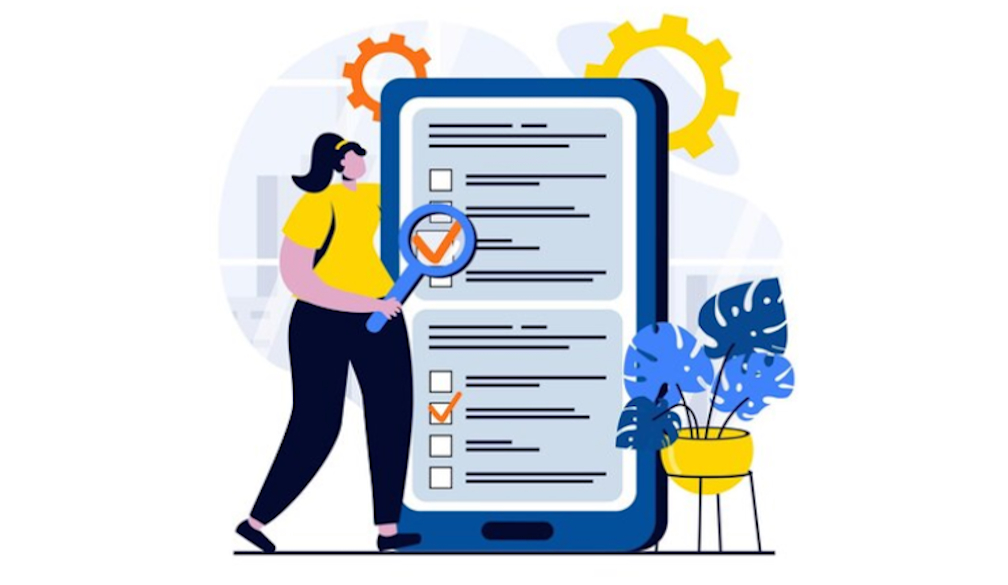Strategy Checklist For Mobile Application Testing

Effective mobile app testing is critical to mobile app success and user satisfaction. Before releasing the program to a wide range of new users, it is important to identify and correct all errors in advance. Check out our quick guide on which testing strategies to use for your project and prepare for the successful launch of your new application.
What is a mobile app testing strategy?
The test strategy is a critical document that defines planned testing activities' objectives, methods, resources, and schedules. It establishes the project's main priorities and general approach to software quality assurance. This document aims to align the testing purpose with the business technical requirements to ensure that the final product meets the required quality standards.
An experienced team with a relevant and rich background should undertake the development of a testing strategy. By finding testers for project they should pay attention on main aspects that are important to consider when developing a testing strategy:
- Objective of the testing strategy: The strategy's main objective is to define a clear path for testing so that every program element is thoroughly tested for defects. It also helps identify possible risks and methods of reducing them, ensuring the software's reliability and functionality;
- Test strategy creators: Creating an effective test strategy is usually left to experienced testing professionals, such as test managers or quality controllers. They actively collaborate with all key project stakeholders, including business analysts, developers, and project managers, to ensure strategy meets project objectives and constraints.
Why is creating a testing strategy important?
Creating a testing strategy is a critical stage in the software development process for several good reasons:
- Alignment with goals: A clear test strategy ensures that all team efforts are directed toward the overall project goals, focusing on critical aspects and quality standards;
- Risk minimization: The testing strategy allows you to identify potential risks and problems in advance, preparing the team to solve them and minimize negative consequences proactively;
- Resource Optimization: Resource forecasting and allocation ensures adequate availability of personnel, tools, and test environments, preventing unnecessary wastage and delays;
- Effective testing: A well-defined testing approach and methodology facilitates efficient testing processes that ensure complete coverage and reduce redundancy;
- Clear communication: A documented test strategy is a communication tool between all stakeholders, promoting a shared understanding of testing goals and approaches;
- Adaptability: A robust test strategy provides a framework for adapting to project requirements and conditions changes while maintaining test integrity;
- Effective Problem Solving: A testing strategy directs the team to systematically solve emerging problems, which helps reduce downtime and improve productivity;
- Complete documentation: Test strategies are valuable assets that provide a historical record of test decisions and actions as a reference for future projects and audits.
Step-by-step testing strategy for mobile application testing
1. Planning and preparationPlanning and preparation are essential to successful mobile app testing. Begin by clearly defining the test objectives and expected results. Define target devices and operating systems to cover all possible use cases for the application. Allocate resources and roles among team members to efficiently complete test tasks.
2. Provide yourself with all the necessary tools and equipmentBefore starting mobile application testing, all the essential tools and equipment are required. The main component is a mobile device: a tablet, smartphone, or emulator. Next, you should choose testing tools that will ensure the quality of the process, including both manual and automated means.
3. Develop a plan for testing mobile applicationsOnce you have determined the scope and scope of testing, the next step is to develop a testing strategy. This means creating an action plan specifying who will carry out the tests and how and setting deadlines. A vital element of this process is test suite preparation: writing test cases or scripts for automated testing.
4. Test the program
Once you've defined and prepared your test scenarios, it's time to implement them. The test launch process will depend on various factors, such as the amount of testing, the degree of coverage, and the frequency of product release, which may vary from company to company. Many DevOps teams update the product daily, weekly, or monthly, depending on the project's schedule and needs, even when working in an offshore team format.
5. Track and manage defectsAfter testing, tracking and fixing defects by prioritizing them is essential. Defect priorities can be low, medium, high, or blocking, depending on their importance. Prioritization is a critical step in managing the program testing process.
Conclusion
Having a solid mobile app testing strategy ensures that your app will launch smoothly and work well. By preparing and organizing the testing process, making sure you have the right tools and methods in place, so outsourced testers can identify and fix issues before users encounter them. A well organized testing plan also ensures that the testing aligns with the project goals, reduces risks and optimizes resources. It promotes clear communication among team members and allows for flexibility to adapt to changing requirements. Ultimately, this approach enhances the quality and reliability of your mobile app, leading to greater user satisfaction and success in the market.

















